ISO vs. Effective Resolution (5D mark III tests)
Noise is pretty much the enemy of everything in digital photography. Increasing noise levels limit dynamic range, color fidelity, and even cause compressed images files to become larger[1]. Along with all of that stuff it also reduces the effective resolving power of the camera too. And that’s what I want to talk about a little today, at least put up some practical illustrations of.
Of course, the entire premise here ought to be pretty obvious to anybody who’s ever really looked at their images from higher ISOs. They just aren’t as sharp and don’t have the fine detail that lower ISO images have.
Unfortunately, this is also a place where very few reviewers ever really provide any kind of quantitative measurements either. That, of course, means that us photographers have to do the measurements ourselves, or just ignore the situation as a whole.
Figuring this stuff out, at least to a level that I’m satisfied with, is part of my camera testing and acclimation procedure. However, I’m also adding this information as part of my standard review data sets, and will likely be updating old camera reviews to include it when I get a chance.
I used my custom test target for these tests. You can find a download, and overview of that target here.
With that said, before I dive into the data, I do need to get a couple of things out of the way.
First, for these tests I used my sharpest lens, a Canon EF 70–200mm f/4L IS USM. Moreover, the lens was stopped down to f/8, which was the best balance between peak sharpness and reasonable exposure ranges that I could get for the test scenario. Remember, this isn’t a test of the lens, it’s a test of the camera’s sensor. The goal is to minimize the lens as a factor as much as possible.
Secondly, there are defects in the printing of my copy of my test target. The source for my target is a vector file so there are no resolution limitations there. However, getting that to print is slightly more complicated. I made a number of attempts at getting as good of an image out of my vector file to my printers as possible. Ultimately I ended up printing a 600 PPI bitmap conversion to get the test target I have, which was the best quality I could manage.
To make a long story short, try as I might, there were still artifacts in the highest resolution part of the test wedge. Beyond about 2800 lines per picture height there are a number of artifacts that crop up in the print that simply shouldn’t be there — at least in theory. Ultimately this means that the test target you’re seeing in this article can only be read up to about 2800 lines per picture height. Because I have the target, I can make some guesses at resolutions slightly above that, but they’re entirely unreliable. For a 3:2 aspect image, 2800 lines per picture height works out to be just slightly less than 12 MP.
So lets get to the data points.
ISO 100
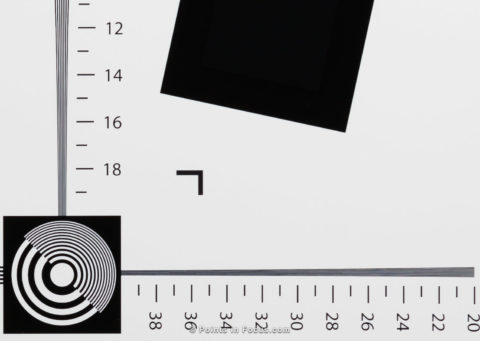
At ISO 100 you can clearly see the defects in my test target around 2400–2800 lines per picture height. In practical terms, the lens actually resolves the details about as well as the target presets them. I’m calling this in excess of 2400 lines per picture height though since I can’t accurately measure better.
ISO 400
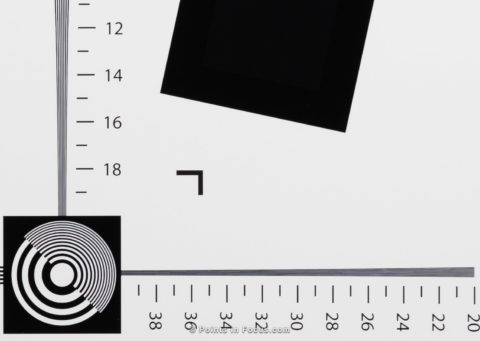
If you look carefully between the ISO 100 files and this one, you can already start to see the effects of noise on resolving power. Overall, the sensor is still resolving better than I can accurately read on this test chart (in excess of 2400 lines per picture height).
ISO 1600
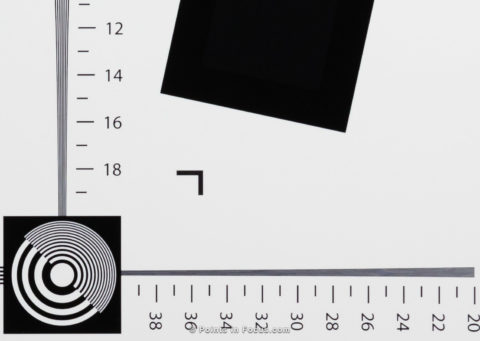
ISO 1600 is an anomaly in this test series, and I believe it’s entirely due to camera shake — not a deficiency in the sensor.
I wanted to point this out though, as a thing to remember in testing. Mirror/shutter induced camera movement is most noticeable between about 1/2 and 1/60 seconds. At slower shutter speeds, the motion settles before there is enough contribution to the exposure, and at faster shutter speeds the motion is stopped by the shutter.
I’m mentioning this because it’s very important to be careful when testing that you minimize all external factors to get good data. I shouldn’t have been using the center column — I was because it’s expedient and I had never had a problem before. Moreover, after making an adjustment I should have allowed more time for the vibrations to dampen out.
ISO 3200
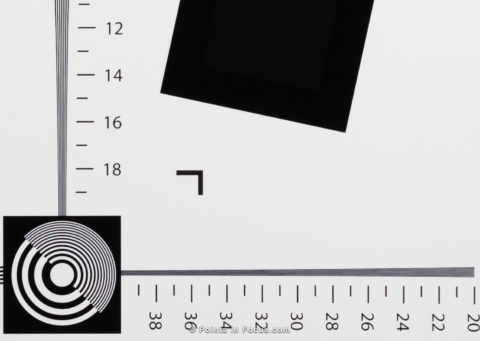
Back to real data, this time at ISO 3200. Again we see the impact on resolution from noise is not horrific, but it’s still there. I’m reading this as about 2300–2350 lines per picture height. This is giving an effective resolution of about 8.2 MP.
In a practical sense, this is about the minimum effective resolution I’d want for a print. And even then, I would want to insure that viewing distances were controlled such that the print couldn’t be readily approached too closely — so think of something behind a couch or desk.
ISO 6400
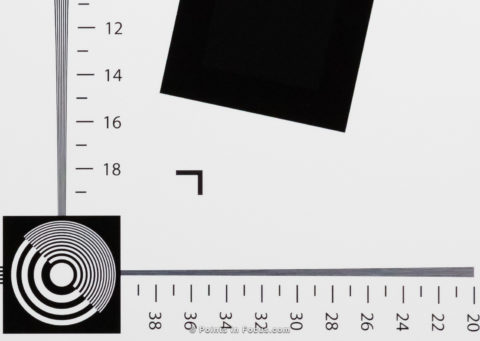
At ISO 6400 I read this as being around 2200 lines per picture height, maybe 2250. At this point we’re at 7.2 MP of effective resolution.
Practically speaking, this is below my personal minimums for making an art print. However, the resolution is still more than high enough for web based content, even high DPI content targeted at retina displays. Or for a journalistic image targeted for newsprint reproduction.
ISO 25600
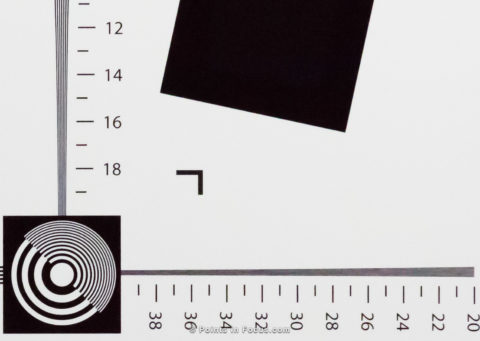
2000 lines per picture height of resolution isn’t that great, equivalent to 6 MP. This is still in the range that I would consider usable for a journalistic purpose. As far as personal minimums go, this is definitely getting into the range where I would only be shooting here when having an image is more important than having a good image.
ISO 51200
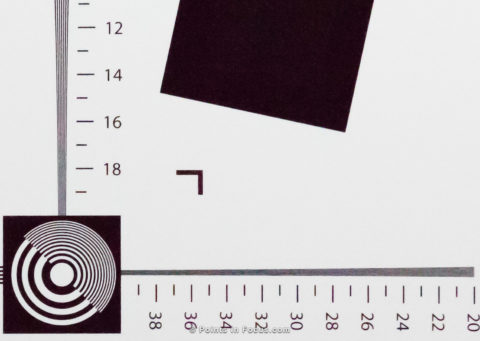
At 51200 the 5D mark III effective resolution is down somewhere around 1800 lines per picture height, at least by my reading. This gives it an effective resolution of about 4.8 MP.
ISO 102,400
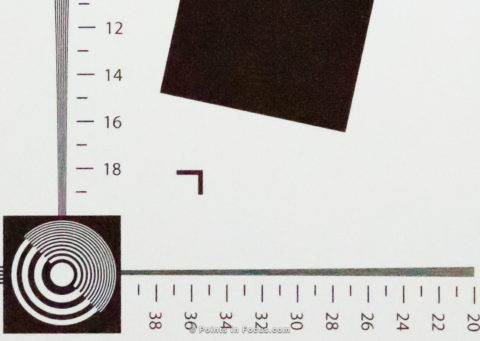
The final test image, ISO 102,400 shows significant resolution limiting effects from noise. Of course, this is entirely expected. I’m reading this as about 1450–1500 lines per picture height, which translates to about 3 MP worth of what I consider clearly and distinctly resolvable details that aren’t influenced by noise.
I’m going to end this kind of abruptly, as I don’t really have any thoughts to add to this, except for one. These measures shouldn’t be taken as absolute gospel, there are a lot of inaccuracies in my testing setup that can affect the measured vales (e.g., camera alignment). The broader point though is to observer the loss of effective resolution as ISO increases to be better informed about camera performance.
- Compression works best when there is a lot of uniformity in the data, the more random the data becomes, the less compressible it becomes. ↩
Comments
There are no comments on this article yet. Why don't you start the discussion?